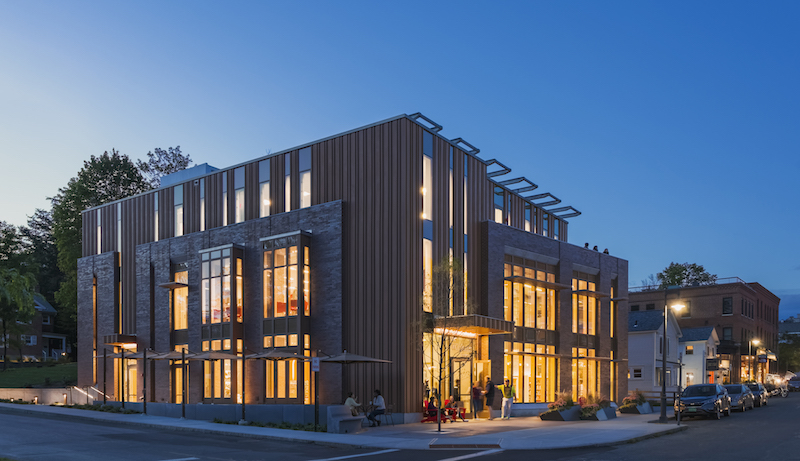The new Williams College campus bookstore includes everything you’d expect in a college bookstore plus a coffee shop, a dedicated area that can be sanctioned off for events and special talks, indoor/outdoor leisure spaces for the community, and a sustainable design that earned LEED Platinum designation.
The CambridgeSeven-designed building used local materials such as granite and bricks for the building’s exterior. A glazing to wall ratio of 24%, insulated glass with integral wood louvers, and an exterior brise soleil for enhanced thermal protection help the building achieve an Energy Use Intensity (EUI) rating of 39. The thicker than average, tightly sealed, insulated walls also help the bookstore achieve the EUI that is 41% better than baseline.
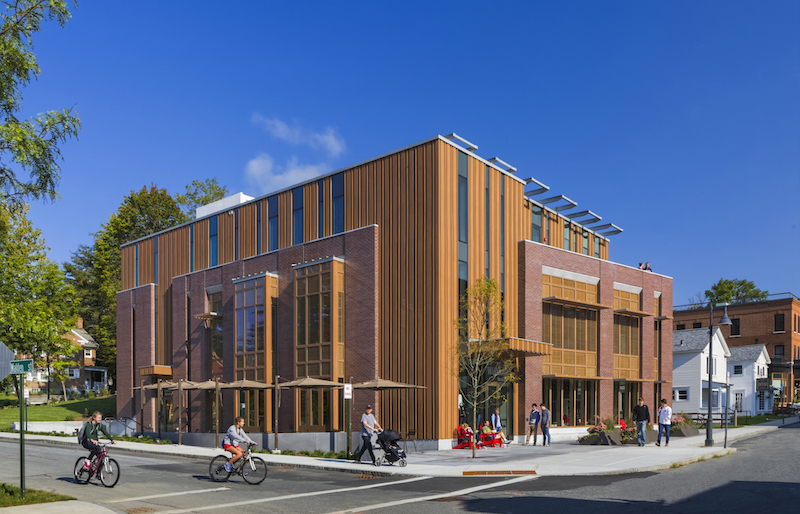 Courtesy Williams College.
Courtesy Williams College.
A stormwater management system helps keep stormwater runoff equal to the pre-development levels. This system includes a rain garden, deep sump catch basins, and underground detention to capture stormwater from roofs and new paving before it runs off the site.
See Also: Best in library design 2018: Six projects earn AIA/ALA library awards
The building does not use any gas, only electricity. As such, the PV array on the roof was designed to form a dynamic part of the building’s presence on Spring Street.
Other features include birch plywood ceilings and fabric paneled hidden doors to section off the café space for programming. In addition to the building design, CambridgeSeven also designed the building’s furniture and finishes.
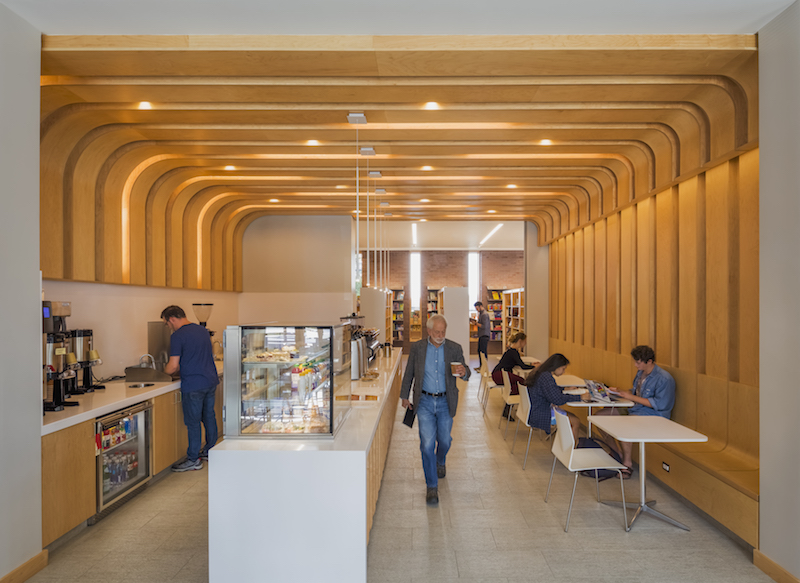 Courtesy Williams College.
Courtesy Williams College.
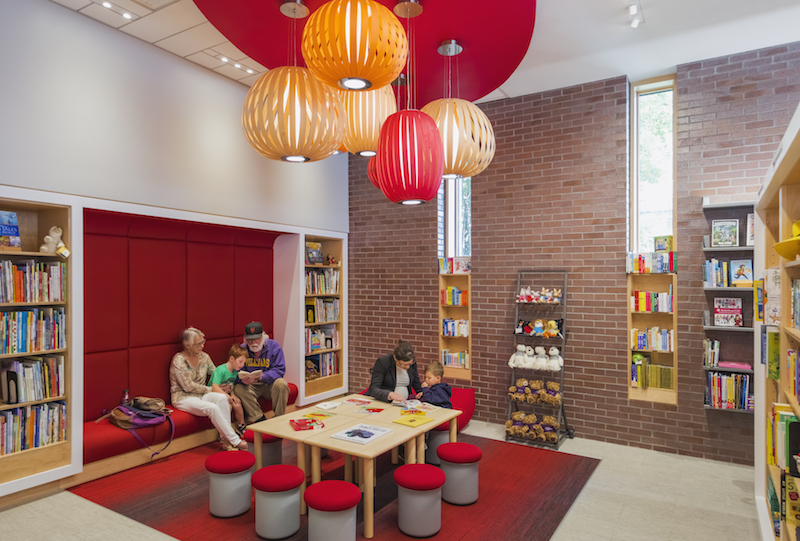 Courtesy Williams College.
Courtesy Williams College.
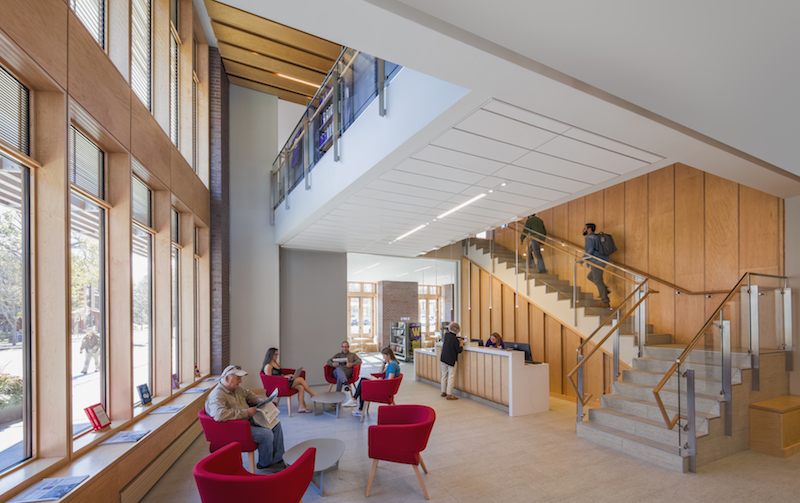 Courtesy Williams College.
Courtesy Williams College.
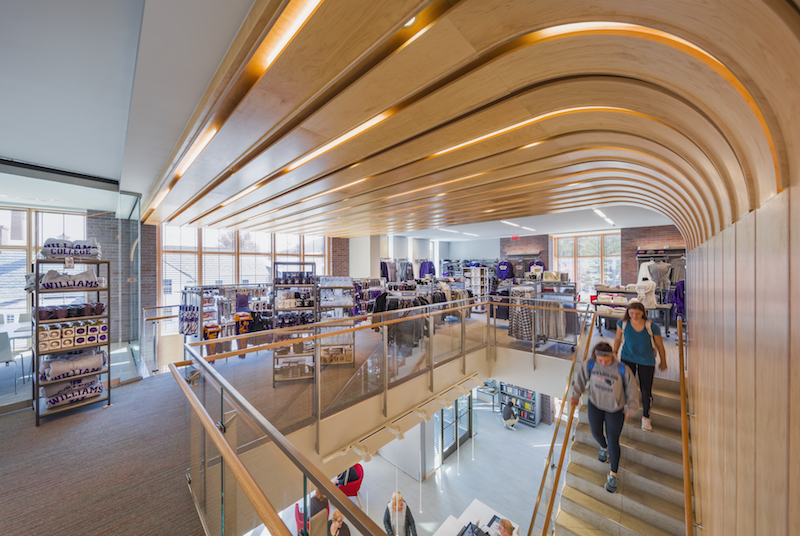 Courtesy Williams College.
Courtesy Williams College.
 Courtesy Williams College.
Courtesy Williams College.
 Courtesy Williams College.
Courtesy Williams College.
Related Stories
| Nov 3, 2014
An ancient former post office in Portland, Ore., provides an even older art college with a new home
About seven years ago, The Pacific Northwest College of Art, the oldest art college in Portland, was evaluating its master plan with an eye towards expanding and upgrading its campus facilities. A board member brought to the attention of the college a nearby 134,000-sf building that had once served as the city’s original post office.
| Oct 16, 2014
Perkins+Will white paper examines alternatives to flame retardant building materials
The white paper includes a list of 193 flame retardants, including 29 discovered in building and household products, 50 found in the indoor environment, and 33 in human blood, milk, and tissues.
| Oct 15, 2014
Harvard launches ‘design-centric’ center for green buildings and cities
The impetus behind Harvard's Center for Green Buildings and Cities is what the design school’s dean, Mohsen Mostafavi, describes as a “rapidly urbanizing global economy,” in which cities are building new structures “on a massive scale.”
| Oct 14, 2014
Proven 6-step approach to treating historic windows
This course provides step-by-step prescriptive advice to architects, engineers, and contractors on when it makes sense to repair or rehabilitate existing windows, and when they should advise their building owner clients to consider replacement.
| Oct 12, 2014
AIA 2030 commitment: Five years on, are we any closer to net-zero?
This year marks the fifth anniversary of the American Institute of Architects’ effort to have architecture firms voluntarily pledge net-zero energy design for all their buildings by 2030.
| Sep 24, 2014
Architecture billings see continued strength, led by institutional sector
On the heels of recording its strongest pace of growth since 2007, there continues to be an increasing level of demand for design services signaled in the latest Architecture Billings Index.
| Sep 22, 2014
4 keys to effective post-occupancy evaluations
Perkins+Will's Janice Barnes covers the four steps that designers should take to create POEs that provide design direction and measure design effectiveness.
| Sep 22, 2014
Sound selections: 12 great choices for ceilings and acoustical walls
From metal mesh panels to concealed-suspension ceilings, here's our roundup of the latest acoustical ceiling and wall products.
| Sep 17, 2014
New hub on campus: Where learning is headed and what it means for the college campus
It seems that the most recent buildings to pop up on college campuses are trying to do more than just support academics. They are acting as hubs for all sorts of on-campus activities, writes Gensler's David Broz.


